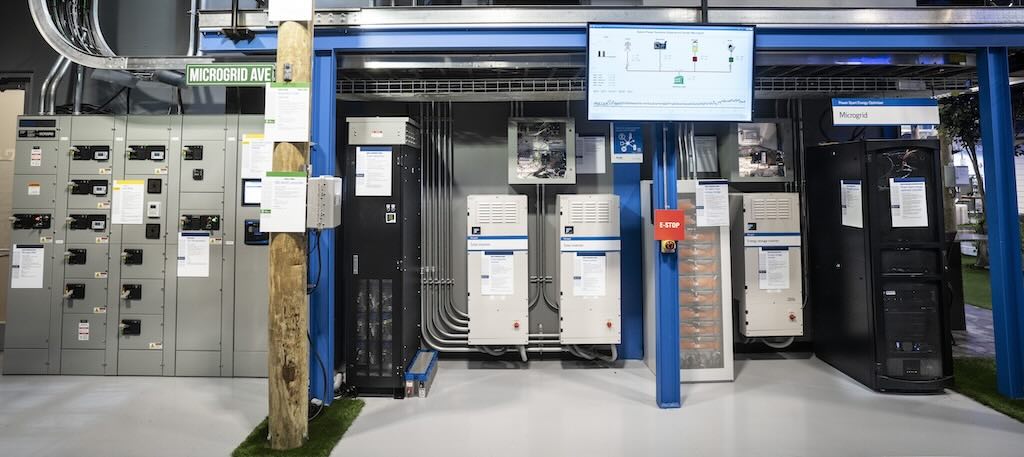For many manufacturing plants, “green” has become a somewhat muddied color. No other sector of the economy comes close to manufacturing in terms of generating industrial waste and pollution.
For many manufacturing plants, “green” has become a somewhat muddied color. No other sector of the economy comes close to manufacturing in terms of generating industrial waste and pollution. With a need to become increasingly energy-efficient to remain competitive, and with ever stricter, more comprehensive environmental regulations emerging from federal and state governments, it has become crucial for manufacturers to monitor and measure their progress toward reducing emissions and other forms of pollution that result from their operations and processes.
Moreover, in many cases, green supply-chain programs have been established, with organizations asking upstream partners to document and share their environmental impact data. While manufacturers may choose to strive for a greener supply chain as a way to document their environmental credentials, to satisfy customer requirements, or to comply with government regulations, the amount and depth of information that must be gathered to track an environmental “footprint” is substantial.
Until recently, tracking a plant’s environmental impact often has been a difficult process. A study by Green Research reports that 39% of major companies say their sustainability performance management systems are poorly integrated, and 38% say it’s too difficult to obtain the data they need. On the other hand, as reported by Environmental Leader in October 2011, companies with effective systems reported such benefits as “a streamlined process for setting environmental goals, greater employee engagement, and reduced time and effort to produce reports and respond to NGO questionnaires.”
According to the survey of 32 senior sustainability executives in North America and Europe, a substantial proportion of companies continue to use spreadsheets to keep track of their environmental performance.
Dashboards such as Microsoft Dynamics AX 2012 were developed to help manufacturers and others track their environmental impact and energy consumption within their ERP system. The dashboard achieves this by tracking the raw materials and energy that the organization consumes. The system also calculates and records the impact of that energy consumption as well as the flow of hazardous emissions into the environment.
With the dashboard, companies are able to:
- Evaluate their current effect on the environment
- Identify opportunities to reduce their environmental footprint
- Calculate and record the flow of potentially hazardous substances into the environment
- Track the impact of environmentally sustainable practices
- Maintain the organization’s status as a preferred vendor for increasingly environment-conscious customers.
Automating the data-collection process significantly reduces the cost and complexity of tracking environmental impacts. As a result, manufacturers now can evaluate every aspect of their operations from an environmental standpoint—from the manufacturing process itself all the way through to the transportation used to ship finished products.
An updated dashboard adds substantial new capabilities to previous versions. Now, not only are companies able to monitor their carbon footprint and related costs, but they also can track a number of other key performance indicators, including waste and water usage.
Of particular interest to many companies is a new “what-if” analysis feature called the emissions simulator, which is designed to help people make the best decisions for their business. This capability enables plant managers to look into the future at the savings and impact reductions of changes like switching energy providers, using more renewables, or investing in capital improvements to increase efficiency. Another helpful addition to the dashboard is a graphical interface that visually represents everything that the dashboard is tracking, making it easier to set up and manage.
With the new dashboard, managers are able to proactively evaluate opportunities for change, implementing improvements to processes and equipment that make the most sense to their specific business’s ability to improve its environmental impact.
How the dashboard works
Every plant produces indirect emissions, through its use of electricity, and direct emissions, through its use of fossil fuels for heating. There are many environmental tools, such as the Environmental Sustainability Dashboard, that can help track the impact of these sources on the environment and uncover solutions to help shrink the company’s environmental footprint.
Creating the dashboard involves:
- Establishing prerequisites for setting up the dashboard
- Carrying out the dashboard setup
- Reporting on collected data.
Prerequisites for tracking impacts
After deciding what to track and measure, a company’s operations manager may conduct a process analysis, examining how materials enter the company and the amount of waste generated by regular business processes. This analysis leads to development of a process map that illustrates how materials pass through the organization.
Not only must processes be documented, but all materials that the company wants to monitor also must be included. For instance, water and electricity use typically are not recorded, but they can be tracked by financial cost. The plastic for packaging a product is tracked in inventory and by cost, but the actual use may not always be tracked—a surplus or deficit of plastic may exist in the inventory.
Setting up the dashboard
With all this in mind, the operations manager can set up dashboards to begin tracking material use and creating reports based on that tracking information.
After initial parameters and records have been set up, employees help collect data by entering figures that the system can use to calculate environmental impacts when workers create a vendor invoice or purchase order. They also record accidental substance flows and quarterly meter readings.
Automated reports of environmental impacts
Once these processes have been established, the dashboard will automatically generate the reports that managers have indicated they need to determine the effects that the plant’s operations have on the environment. The technology can provide graphs and tabulated details describing such data as:
- Energy consumption
- Water consumption
- Wastewater
- Materials consumption
- Recycled content of raw materials
- Solid waste
- Greenhouse gas emissions
- Greenhouse gas emissions by process
- Energy costs by energy type
- Direct energy consumption mix
- Indirect energy consumption mix
- Substance entry status (assignments for data entry and indications of whether data is entered on time).
This array of information was rarely available to plant management before. It provides the opportunity for a significant competitive edge by helping ensure compliance with regulatory requirements, reducing waste, lowering costs associated with inefficient energy use, pinpointing sources of costly inefficiencies, and guiding the purchase of new equipment for maintaining sustainable, yet lean, operations.
Environmental dashboards are essential for today’s businesses to track and act on environmental impacts.
Kumar is global industry product director for Microsoft. More information can be obtained at www.microsoft.com/dynamics.



